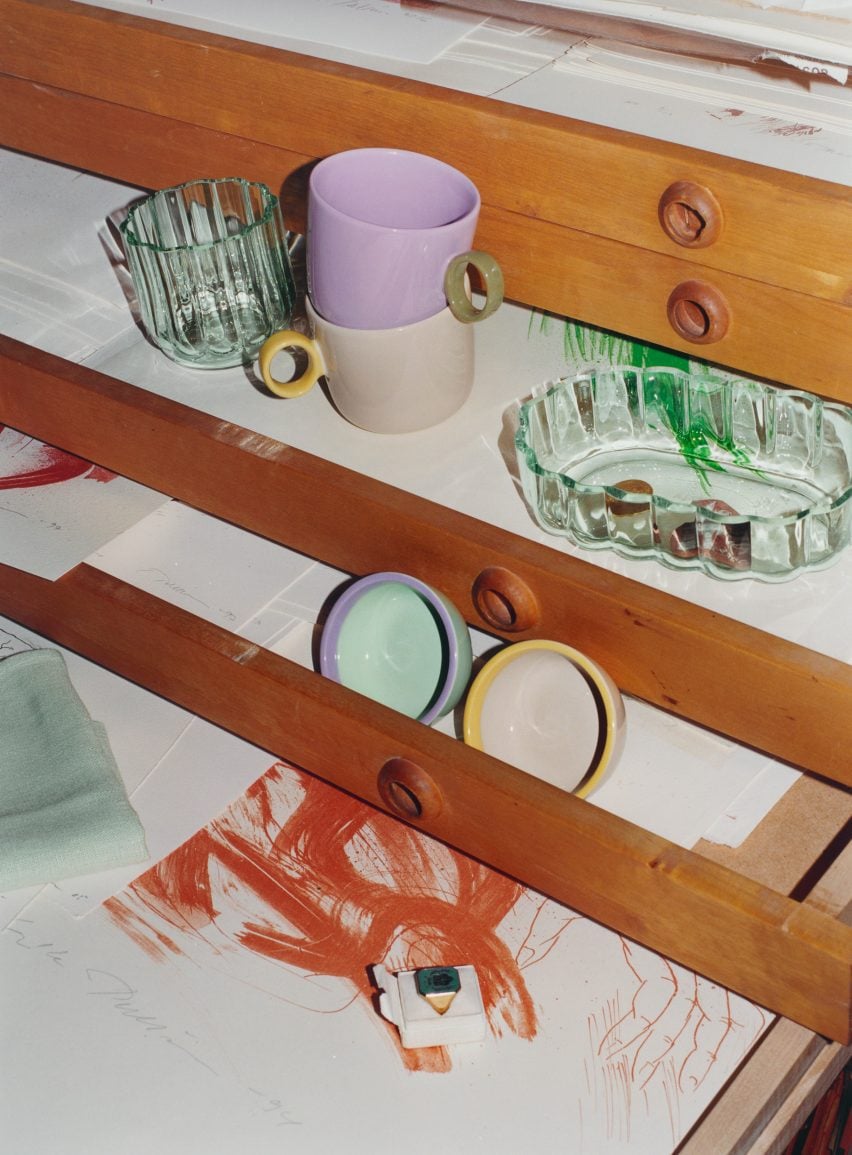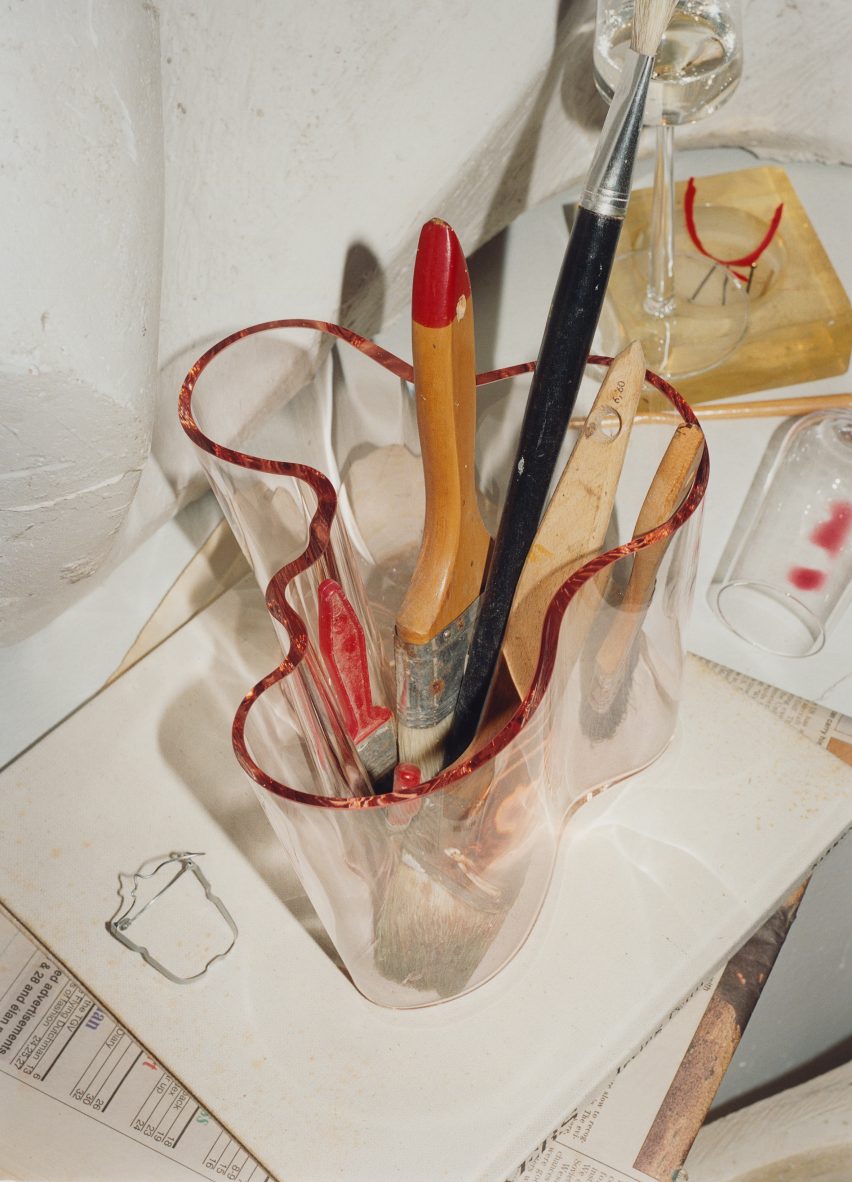
Janni Vepsäläinen aims for Iittala to "remain culturally relevant for another 100 years"
Finnish brand Iittala's reinvention aims to build on its founding identity of "experimental, boundary-pushing" design, says its creative director in this interview with Dezeen.
Finnish designer Janni Vepsäläinen, who joined Iittala last year from fashion brand JW Anderson, aims to make sure the brand stays relevant and innovative, something she believes is in its DNA.
"[My] creative vision is built on the founding identity of the brand," she told Dezeen. "I'm really looking into its founding identity, which is this experimental, boundary-pushing, challenging-the-status-quo type of design thinking."

The company was founded in 1881 and is best known for its glassware, which Vepsäläinen remembers from being a child.
"We had Iittala glasses in my home and it was the kind of thing that would be passed down generation after generation," she said.
"What inspired me about the brand is that very few brands have that kind of stance in people's lives, it's really part of the journey and closes the generation gap in terms of products travelling from mother to daughter."

As an example of the innovative ethos she wants to continue, she mentioned architect Aino Aalto's pressed Bölgeblick glassware for Iittala. Launched in 1932, the pressed glassware has a pattern informed by circles in water.
"If you look at the designs of that time, it's little cups with gold rims and floral patterns, Vepsäläinen said. "And then you have this, which is so in your face, it's such a ballsy move."
For her own debut at Iittala, which is launching its "new era" during Stockholm Design Week, Vepsäläinen is unveiling a collection named Play.

The brand is also showcasing a series of playable, glass instruments made by experimental sound and visual artist Damsel Elysium.
"I knew I wanted to do a project that was exploring the glass as more of a showpiece for the collection," Vepsäläinen explained.
"I felt strongly that I wanted to collaborate with another creative, but it was clear to me that I wanted it to be somebody who doesn't come from the traditional design background," she added.
"It was important to disrupt the status quo a bit in terms of the design language."

The resulting products included glass horns, some over two metres long. These were used for a performance during the brand's launch event in Stockholm, which took place inside the KTH Reactor Hall, the site of Sweden's first nuclear reactor.
"Creating those glass instruments with them was an amazing project," Vepsäläinen said. "And I think that really encapsulates all of that creative energy that I'm trying to push forward."

Play, the first collection to be launched under Vepsäläinen, was informed by Finnish architect Alvar Aalto's quote "Don't forget to Play".
It features tableware and glassware but also textiles and candles, with a colour palette informed by the south of France.
"One of my first tasks, which comes from my fashion background, was that I wanted to build a collection. And I think that's something that we're going to be taking forward, bringing a new lifestyle collection every six months," Vepsäläinen said.
"We need that discipline and I think we need to have a clear cycle that we can commit to."
While the six-monthly production cycle has often been criticised when it comes to fashion brands, Vepsäläinen believes that it has validity for a brand like Iittala, which has traditionally had very long production lead times.
"It leans back into the topic of staying relevant," Vepsäläinen said. "It's not so much about needing to push more product into the market, but more about creating a discipline."
As Iittala has a portfolio that is heavy on Scandinavian design classics, she thinks it is important to balance these with new releases.
"My challenge is, how do keep that relevant today and how do I inject the newness into the brand while still keeping the core alive and interesting and bring a bit of novelty into that?" she said.
"You have to make everything come together and look like one brand."

She hopes to give Iittala elements of "something avant garde and slightly unexpected".
The brand, like many heritage design and fashion brands, also wants to attract a younger demographic.
"We want to speak to a younger target audience as well – it's not a secret that any brand at this time, and anytime, needs to consider how to remain relevant to its time," Vepsäläinen said.
"How do we exist in 100 years time? If [a brand] has been around since 1881, that already presents a challenge – how do you remain culturally relevant for another 100 years?" she added.

For Vepsäläinen, taking on the challenge of renewing a brand that people have a strong connection to felt slightly daunting.
"I'm very sensitive to that and I'm very aware that not everybody's gonna like it – it will cause a bit of a stir no matter what I do because we're touching this national treasure," she said.
"But I always go back to my intuition and the fact that the creative vision is very much built on the founding identity of the brand," she continued.
"The founding identity of creating long-lasting products hasn't gone anywhere; we still take that challenge that we want to create products that are objects that last generation after generation, both aesthetically and physically."

Together with the new product launches, Iittala has also revealed an updated visual identity, with a logo (main image) that draws from two historical logos and has a colour that references the glassware that the brand is best known for.
"Everything comes from the idea of the free-flowing glass; the yellow colour is the colour of the melted glass when it comes from the furnace," Vepsäläinen explained.
The brand is also updating its retail stores, beginning with its Helsinki flagship in September of this year.
It was one of several launches at this year's Stockholm Design Week, which also included Finnish brand Vaarni's collaboration with British designer Faye Toogood and Danish brand Normann Copenhagen's hemp and eelgrass chairs.
The photography is courtesy of Iittala.
Stockholm Design Week takes place in Stockholm from 5-11 February. See Dezeen Events Guide's Stockholm Design Week 2024 guide for information about exhibitions and events taking place throughout the week.